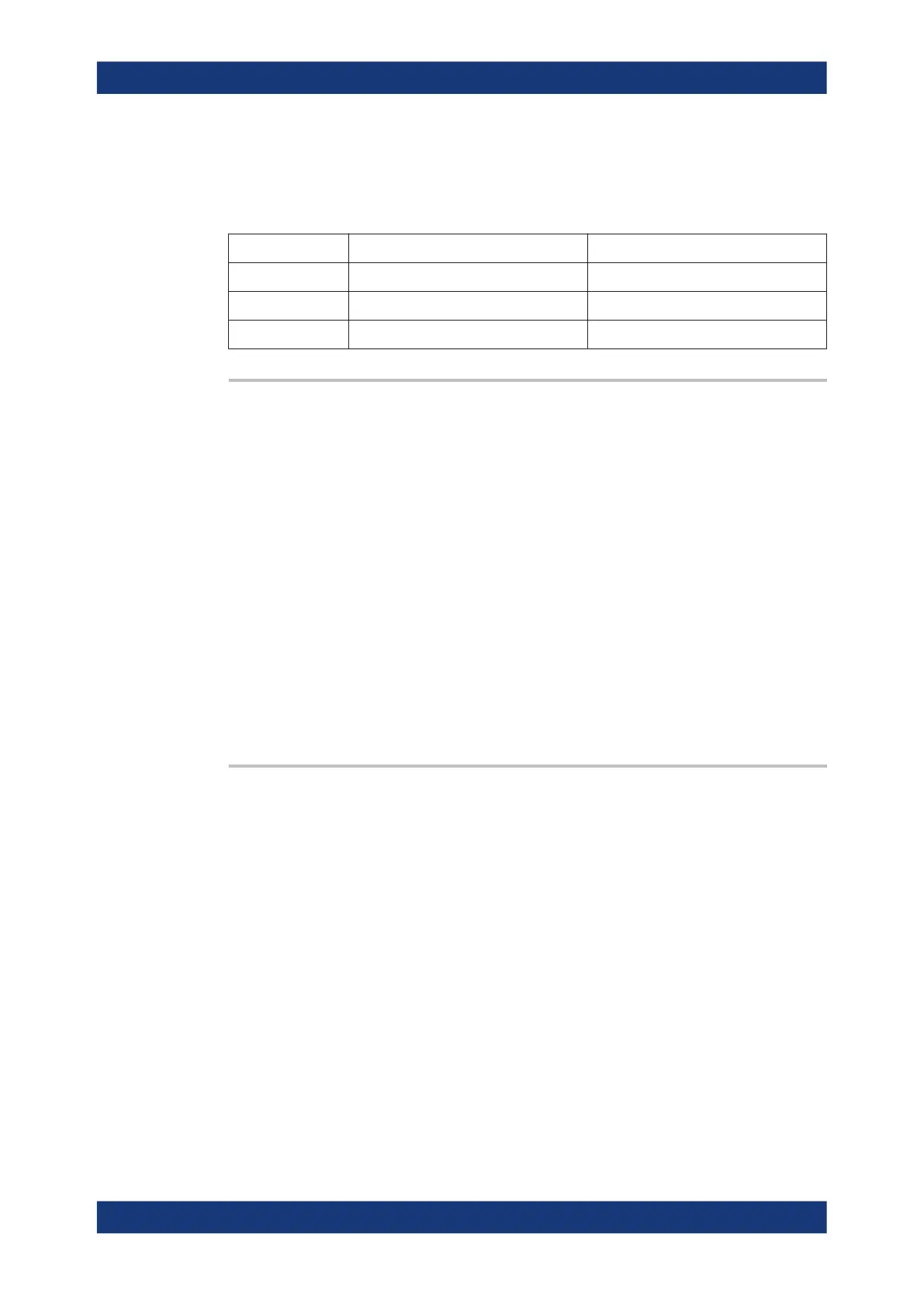Command reference
R&S
®
ZNB/ZNBT
996User Manual 1173.9163.02 ─ 62
Options: R&S ZNB/ZNBT-K3
Manual operation: See "Add / Delete" on page 733
Table 7-5: Example: frequency-dependent attenuation table
[i] Frequency Attenuation
1 1 GHz 0.01 dB/m
2 2 GHz 0.015 dB/m
3 3 GHz 0.012 dB/m
CALCulate<Chn>:TRANsform:DTFault:DELete <DtfDeleteCable>
Deletes the user-defined cable type with the given name.
Suffix:
<Chn>
.
Channel number
This suffix is ignored: cable types are defined for (and deleted
from) all channels.
Setting parameters:
<DtfDeleteCable> Name of a user-defined cable type.
Example:
CALCulate:TRANsform:DTFault:DELete 'My cable
type'
Deletes the user-defined cable type "My cable type".
Usage: Setting only
Options: R&S ZNB/ZNBT-K3
Manual operation: See "Add / Delete" on page 733
CALCulate<Chn>:TRANsform:DTFault:PEAK:COUNt?
If the active trace of channel <Chn> is a Distance to Fault (DtF) trace and DtF limit
checking is enabled, this query returns the number of DtF limit violations of this trace.
Use CALCulate<Chn>:TRANsform:DTFault:PEAK:STATe to enable DtF limit
checking and CALCulate<Chn>:TRANsform:DTFault:PEAK:THReshold to set
the fault limit.
Suffix:
<Chn>
.
Channel number used to identify the active trace
Usage: Query only
Options: R&S ZNB/ZNBT-K3
Manual operation: See "Fault Table" on page 734
SCPI command reference

